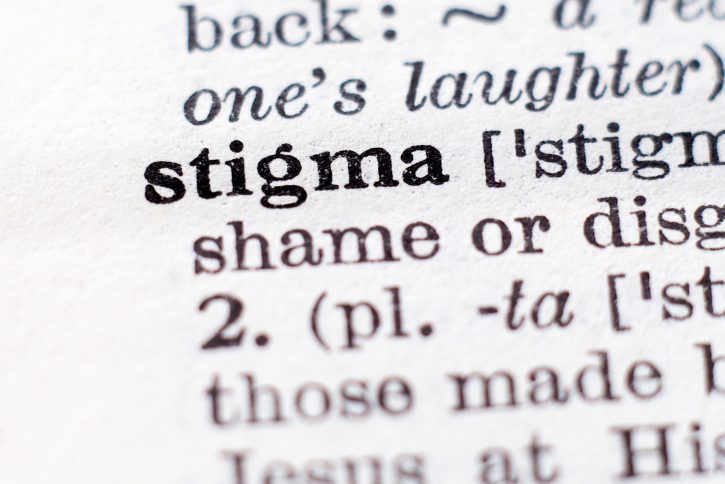
Article originally published on February 15, 2021.
What is Stigma?
The term “stigma” refers to negative emotions or beliefs associated with certain conditions, circumstances or groups of people. These views are often rooted in fear or based on opinion, not facts.
Who Experiences COVID-19 Stigma?
Most commonly, the following groups have experienced COVID-19 stigma:
- Certain racial or ethnic groups, including Asian American, Pacific Islander and African American communities
- Healthcare workers, first responders and other essential employees
- Individuals with underlying health conditions that may cause chronic cough
- Individuals living in congregate settings, including those in assisted living or experiencing homelessness
- Individuals with underlying health conditions, developmental or behavioral disorders that prevent them from wearing a mask or following public health recommendations
- Individuals who have contracted COVID-19 and since recovered
It’s important to note that stigma negatively impacts everybody, not just those who are directly targeted by these misplaced emotions.
Recognizing Stigma
Stigma can look different from one person to the next, and may be influenced by fear, anxiety, anger and a variety of other emotions. Signs of COVID-19 stigma might include:
- Verbal abuse, or speaking negatively to or about someone because of their COVID-19 experience.
- Placing blame, expressing anger or being hostile towards someone because of their COVID-19 experience.
- Avoiding, excluding or ignoring someone because of their COVID-19 experience.
- Discriminating against someone because of their COVID-19 experience, which may include denying housing, employment or other essential needs.
- Being unfairly judgmental of someone who is not following public health guidance. (Remember, certain health conditions, behavioral and developmental disabilities can make it difficult to adhere to guidelines.)
By making others feel ashamed or embarrassed of their COVID-19 experience, more and more people become less likely to report symptoms, seek care or participate in contact tracing for fear of facing similar treatment. To overcome the coronavirus pandemic, we need to work together.
Reducing Stigma
The first step to reducing stigma is recognizing it. Next, it’s important to do the following:
- Share accurate, up-to-date information (including on social media)
- Gather information from credible sources, like the CDC, WHO and ODH
- Discuss what you’ve learned with your peers and loved ones
- If you encounter someone spreading inaccurate information, respectfully speak up or direct them to a more reliable source. (Some people may be resistant to your efforts to educate: it’s okay to disengage from those conversations.)
- Stop the spread of stereotypes and negative language
- Do not refer to the novel coronavirus using locations or ethnicities (such as “China virus” or “Wuhan virus”)
- The official name for the novel coronavirus is SARS-CoV-2, and COVID-19 is a shorthand way to reference the illness it causes: Corona(CO)virus(VI) disease(D)-2019 (the year it emerged).
- Share messages of gratitude with frontline workers
- Frontline workers – including those in healthcare, transportation and other service industries – put themselves at risk to serve others. Saying “thank you” may feel like a simple thing, but it can make a big difference.
- Treat others with kindness and understanding
- If someone you know does not take COVID-19 seriously, you have the right to respectfully distance yourself. If it is a friend of loved one, let them know that you feel more comfortable connecting virtually for the time being.
- Avoid rushing to judgement when someone appears to be ignoring public health guidelines. It is impossible to know their physical or mental health history at a glance.
- If you have been identified as a contact, take a deep breath. Try to respond with understanding instead of anger or blame. No one wants to expose their loved ones or peers to this virus, and you were identified in someone’s contact tracing because they care about your well-being.
- If someone you know has recently recovered from COVID-19, be kind. It’s okay to maintain social distancing guidelines, but ignoring, avoiding or isolating a recently-recovered peer can be damaging to their mental health. If you were in their shoes, how would you want to be treated?
- Share accurate, up-to-date information (including on social media)
Correcting misinformation and treating one another with empathy and respect are two of the most important tools in reducing stigma.
Responding to Stigma
If you are experiencing stigma following a COVID-19 diagnosis, consider the following:
- Educate others about recovery guidelines and safely ending isolation protocol. Assure them that you have followed the advice of your healthcare provider and public health officials.
- Continue to wear your mask and maintain physical distance following recovery: these preventive measures remain critical to your safety, and they may make your peers feel more at ease.
- Consider joining a support group. Connecting with others who understand what you’re going through can help alleviate feelings of isolation.
Sources: Centers for Disease Control and Prevention, World Health Organization